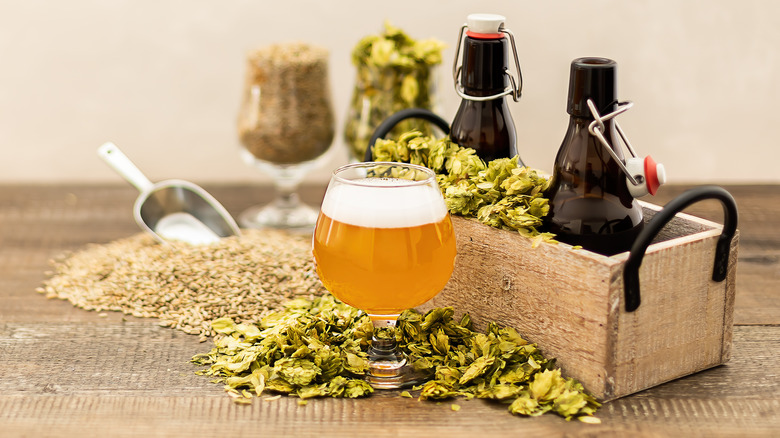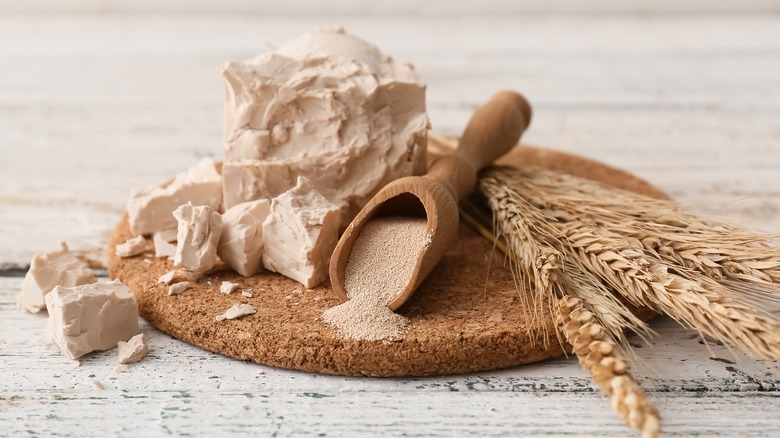The 4 Non-Negotiables For Home-Brewed Beer, According To An Expert
Since the Neolithic revolution, when the implementation of agriculture paved the way for human civilization, society has been inextricably linked to the art of brewing beer. Little has changed over the ensuing millennia, as creating new brews and experimenting with recipes remains a popular business (and hobby) in the 21st century — some people have even turned Lucky Charms into beer, for example.
Because beer is made through a biochemical process called ethanol fermentation, in which yeast converts sugar into alcohol and carbon dioxide, a successful batch requires specific conditions. Failure to maintain these conditions can result in the beer becoming contaminated with mold or bacteria. In an exclusive interview with Mashed, co-owner and head brewer of Spice Trade Brewery + Kitchen Jeff Tyler helped hobbyists avoid the biggest mistakes people make when brewing beer by explaining four non-negotiables: cleaning, sanitization, healthy yeast, and temperature control.
When unwanted bacteria find their way into your fermentation vessel, your beer can become infected. As such, a good batch always begins with clean tools. "Make sure you spend the time to ensure every piece of your equipment is clean," Tyler told Mashed. Only after removing debris and buildup should you use a sanitizing chemical to kill any unseen organisms that may linger on your brewing equipment. "[This] will ensure that your yeast is the only organism in your beer and help prevent contamination, off flavors, and bad batches," he explained.
Keep your yeast fresh and cool
Once you've thoroughly cleaned and sanitized your equipment, your focus should shift to the quality of your yeast — as expert brewer Jeff Tyler told Mashed. Rather than shelf-stable dried yeast, which is commonly used in baking, he recommends fresh yeast or a moist block of compressed yeast cells that requires refrigeration. In addition to the yeast's quality, Tyler maintains that the quantity of yeast cells is also critical. Typically, 1 million yeast cells are required for every milliliter of wort, although this ratio can vary depending on the type of beer being produced.
Finally, maintaining temperature control during the fermentation process is imperative for making good beer. As a general rule, yeast produces the best-tasting beers at temperatures between 66 and 72 degrees Fahrenheit. Because fermentation produces heat, ensuring that the liquid's temperature doesn't climb above the desired range can be difficult. "You can store your beer in a cool, dark place for fermentation if you don't have a way to limit how hot the batch gets," Tyler told Mashed. Additionally, he recommended using kveik yeast, a strain that ferments at a higher temperature. "These strains excel when there is no temperature control during fermentation," he concluded. If you give Tyler's advice a try, you just may join history's pantheon of successful brewers.

